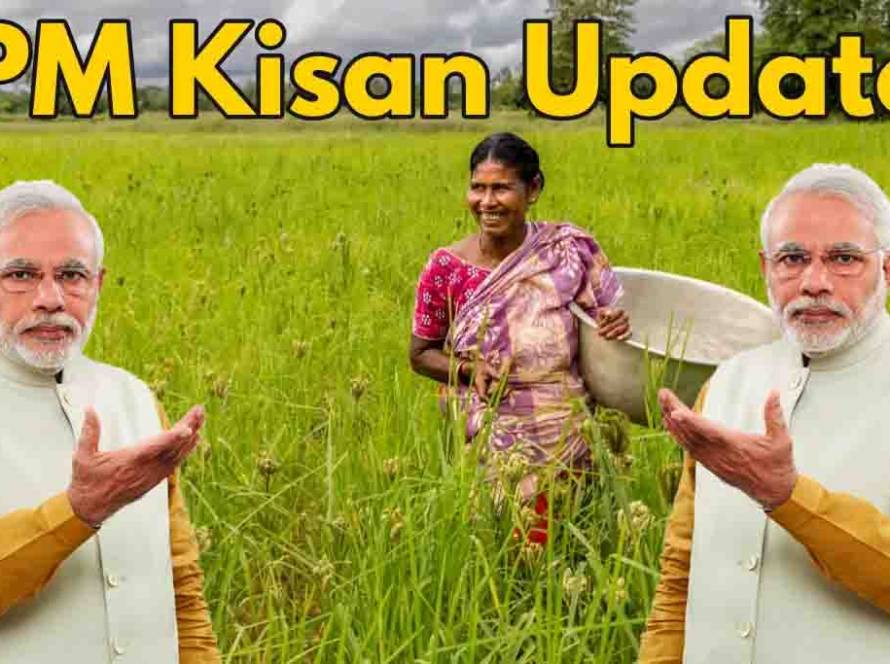Thousands of farmers in Madhya Pradesh are staring at an uncertain future as their next PM-Kisan installments hang in the balance. The scheme that promises Rs. 6,000 per year to small farmers – paid in three installments of Rs. 2,000 each – seems to be hitting roadblocks in the state.
What’s Going Wrong?
1. The Aadhaar-Land Record Tangle
Take Ramlal, a 55-year-old farmer from Sehore district. He’s been waiting for his last two installments, but his payment is stuck because his son’s name was added to the land records last year. “The patwari said my Aadhaar doesn’t match the new records,” he says, scratching his head. “I’ve made three trips to the tehsil office, but the file hasn’t moved.”
This isn’t just Ramlal’s problem. Across MP’s villages, countless farmers face similar issues where minor changes in land records – inheritance, sales, or even spelling mistakes – are creating havoc with their PM-Kisan payments.
2. The e-KYC Hurdle
In a small cyber cafe near Bhopal, a line of frustrated farmers waits to complete their e-KYC. “My grandson tried helping me do it on the phone,” says 60-year-old Kamla Bai, “but after three attempts, it said my biometrics didn’t match.”
The government’s push for digital verification is leaving behind many elderly farmers who struggle with fingerprint scanners or iris recognition. Internet connectivity issues in rural areas only compound the problem.
3. Bank Account Blues
Suresh Patel, a farmer from Narsinghpur district, received his first two installments without trouble. Then his bank merged with another, changing his account number. “Nobody told me I needed to update this for PM-Kisan,” he rues. Now his Rs. 2,000 is bouncing back to the government every time.
What Farmers Can Do
1. Don’t Just Wait – Check Your Status
The first step is to visit the PM-Kisan portal (pmkisan.gov.in) and check your beneficiary status. If your name shows as “Pending” or “Rejected,” there’s likely an issue that needs fixing.
2. Fixing Documentation Issues
- For land record mismatches: Carry original documents to the tehsil office. Better yet, go with someone who can read English/Hindi well to navigate the bureaucracy.
- For e-KYC problems: Try different CSCs if one fails. Sometimes the biometric device at one center works better than another.
- Bank account updates: Visit your bank first to confirm your account is DBT-enabled, then update details at the nearest agriculture office.
3. Where to Get Help
The system can be frustrating, but help is available:
- PM-Kisan helpline (155261) – Be prepared to wait, but they can tell you exactly why your payment is stuck
- Local agriculture extension officers – They’ve been trained to assist with these issues
- Village computer centers – Many now have staff specifically to help with scheme applications
The Bigger Picture
While officials claim they’re working to resolve these issues, the ground reality remains messy. “We’ve conducted special camps in 12 districts to clear pending cases,” says a state agriculture department official who didn’t want to be named. “But for every case we solve, two new ones come up.”
The timing couldn’t be worse. With input costs rising and monsoon uncertainties, that Rs. 2,000 installment means the difference between buying seeds or taking a loan for many families.
What Needs to Change
Farmers and local activists suggest some practical solutions:
- Extend deadlines for e-KYC with proper awareness campaigns
- Simplify the process for elderly farmers who can’t navigate digital systems
- Clear communication when payments are rejected, explaining why in simple terms
For now, the message to MP’s farmers is clear: Don’t assume your payment will come automatically. Check your status, fix any issues, and keep following up. That Rs. 2,000 may not seem like much to policymakers, but for India’s small farmers, it’s often what keeps them afloat.



